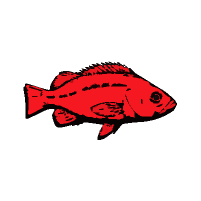Glossary
 This glossary defines terms used by StreamNet and in related documents. The glossary also includes acronyms when these exist. StreamNet aims to align with existing definitions agreed upon by its regional partners and other official sources, thus the majority of the terms included in this glossary have definitions from PNAMP’s MonitoringResources.org and from Data Management Association International (DAMA).
This glossary defines terms used by StreamNet and in related documents. The glossary also includes acronyms when these exist. StreamNet aims to align with existing definitions agreed upon by its regional partners and other official sources, thus the majority of the terms included in this glossary have definitions from PNAMP’s MonitoringResources.org and from Data Management Association International (DAMA).
| Term (Acronym) | definition | Source |
|---|---|---|
| Adult Return — Estimates of Spawning Population | This data category contains estimates of the total number of fish returning to spawn in a defined location. The estimates are usually derived from expansions of redd counts or other index area counts. For salmon the data include adults, jacks, or a combination of both; adults are generally presumed unless specified otherwise in the source documentation. These values are generally generated annually. | StreamNet |
| Adult Return — Peak/Other Spawning Counts | This data category contains counts of fish on their spawning grounds. Included are both counts of live fish and dead fish, presented as either raw counts or as number of fish per mile. The term “peak count” is used in at least two different ways in the Pacific Northwest: 1) a single count conducted at the time when the peak number of fish are expected to be on the spawning grounds; 2) the highest count from several conducted through the course of the spawning season. Which definition of “peak” count is meant varies geographically and perhaps temporarily. Refer to the documentation to determine which measure is meant for each particular time series. These counts are generally conducted annually. | StreamNet |
| Adult Return — Redd Counts | This data category contains redd count data. Counts are presented as either raw counts or as number of redds per mile. The term “peak count” is used in at least two different ways in the Pacific Northwest: 1) a single count conducted at the time when the peak number of redds are expected to be on the spawning grounds; 2) the highest count from several conducted through the course of the spawning season. Which definition of “peak” count is meant varies geographically and perhaps temporarily. Refer to the documentation to determine which measure is meant for each particular time series. These counts are generally conducted annually. | StreamNet |
| Adult Return — Spawner/Recruit Estimates | This data category contains spawner:recruit relationships for anadromous fishes. The values were generated by agency biologists based on run reconstructions. Unlike other data in the StreamNet database, these are highly-derived values rather than raw or minimally-derived values. | StreamNet |
| API Key | This is the GUID assigned to a user of the StreamNet API. All records submitted or altered by a user are stamped with her/his unique id. | StreamNet |
| Application Programming Interface (API) | A published standard format for communicating with applications. | |
| Archive | A copy of a database or documents preserved in a secondary, lower cost storage location, for infrequent historical reference and/or recovery. | |
| Backwards Compatible | (1)Able to accept input from older or earlier versions of a device or software. (2) Operational on older technology even if limited in functionality. | |
| Bonneville Power Administration (BPA) | The Bonneville Power Administration is a nonprofit federal power marketing administration based in the Pacific Northwest. Although BPA is part of the U.S. Department of Energy, it is self-funding and covers its costs by selling its products and services. BPA markets wholesale electrical power from 31 federal hydroelectric projects in the Northwest, one nonfederal nuclear plant and several small nonfederal power plants. The dams are operated by the U.S. Army Corps of Engineers and the Bureau of Reclamation. The nonfederal nuclear plant, Columbia Generating Station, is owned and operated by Energy Northwest, a joint operating agency of the state of Washington. BPA provides about 28 percent of the electric power used in the Northwest and its resources — primarily hydroelectric — make BPA power nearly carbon free. | |
| Category | the generic term for items at any level within a classification. |

